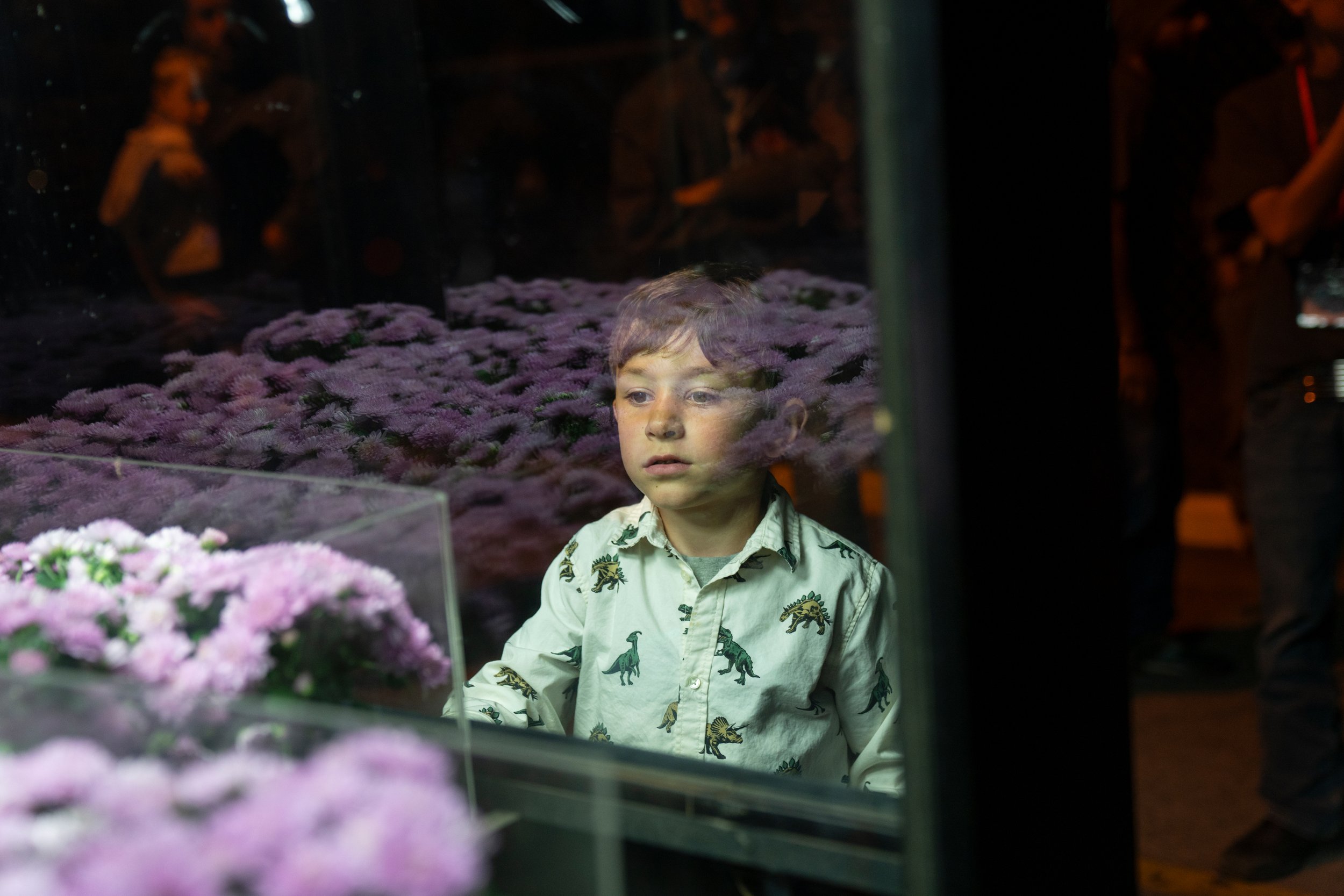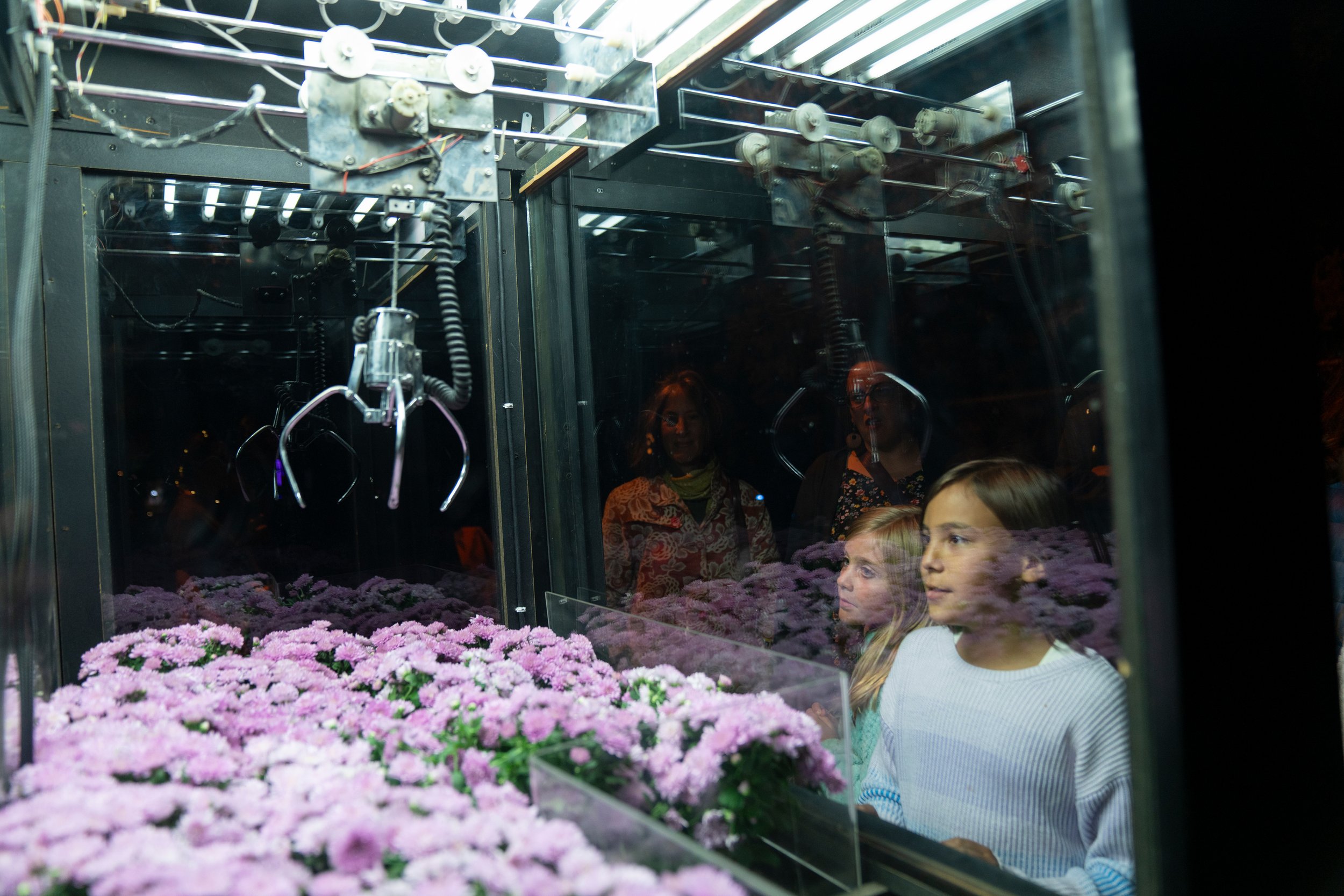Lance Ryan McGoldrick
Albuquerque, New Mexico
“The Toy Box” | Interactive Installation
Illuminating the street is a vintage arcade claw machine, The Toy Box. As the viewer approaches, they begin to notice something oddly comforting about this classic game — rather than kitschy plastic toys and plush stuffed animals, the machine is filled with live Pansy flowers. The game, loaded with free play credits, allows participants to endlessly attempt to pick a flower.
Made specifically for The PASEO Festival, this work was completed in February 2023 and will be planted in summer, ensuring a perfect bloom by September. Inside this classic arcade game cabinet, a simple robot hand will be controlled by festival attendees who will repeatedly try to pick a flower by maneuvering the mechanized claw. The claw is clumsy, incapable of picking and delivering a flower, and may damage some of the flowers in the process. I do not intend to maintain the flowers, but allow viewers to decide whether or how much to interact with the game. I feel this project contains a potent metaphor for our ever-growing spiritual and technological separation from nature.
About the artist:
In this sped-up capitalistic world, regard is given to new and shiny things. All too many humans have forgotten their traditions and lost connection with nature. I am troubled by this loss but find hope in the debris, I see poetry in trash. Through the creation of spaces and objects, I create visceral art works that connect people with a sense of natural wonder.
Objects contain unique histories, shaped by people and places. Even garbage tells a personal story. Abandoned and discarded objects are often free and unfortunately plentiful. This abundance in material, and the way it shows up in my work, fuels a conversation about use in the face of over-consumption and planned obsolescence. I emphasize the physical and emotional aspects of decay to explore issues of loneliness and entropy and into this space of abandonment, I invite the natural forces of reclamation.
Drawing on my personal experiences, I use my practice to ask questions about societal values, seeking solace in the act of making, and a shared connection of growth and understanding with the viewer. My work incorporates industrial waste and discarded materials to construct large-scale experiential works that are often immersive and interactive; they rely heavily on geometry, abstract patterns and light. Themes of innocence, childhood, decay and impermanence run throughout my work. Whether in theme or material, my work confronts the nature of materialism, asking questions about the efficiency of resources, their cost to the natural world, and the way we (dis)regard our world.








